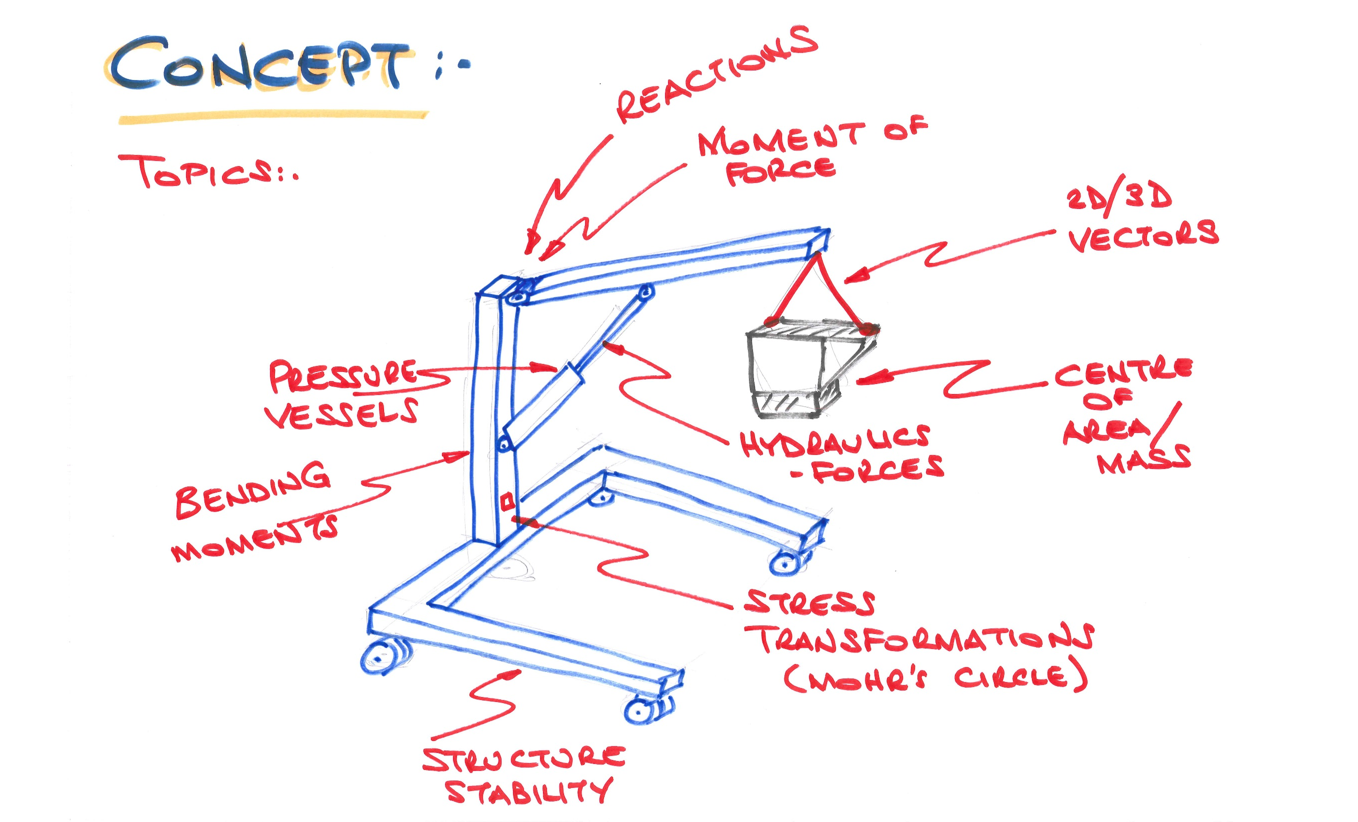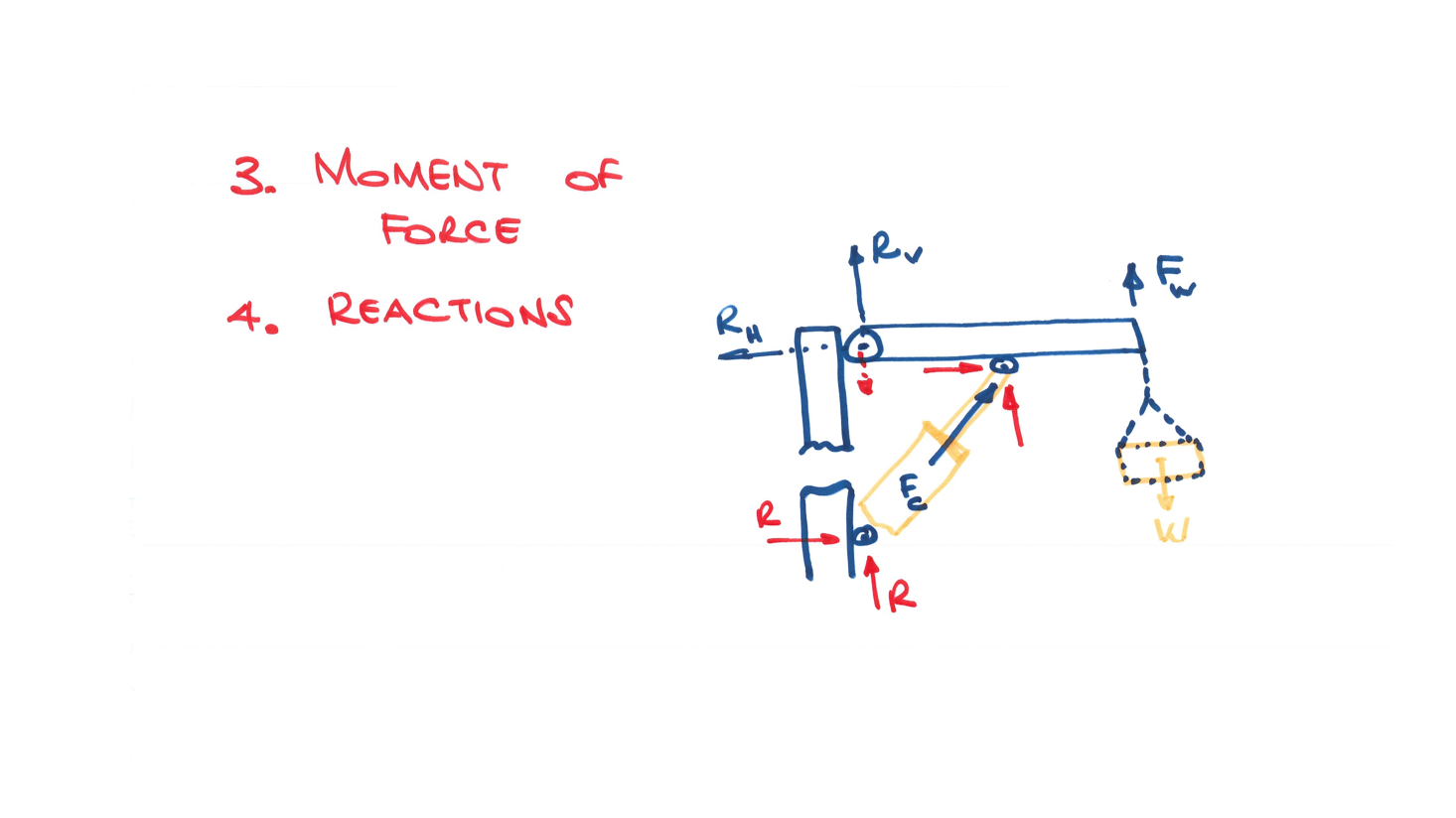
Engineering Foundations
Bondi Labs developed Engineering Foundations for university students at the University of the Sunshine Coast (UniSC). This cutting-edge educational tool utilizes game technology to bridge the gap between theoretical knowledge and practical scenarios.
The problem
The School of Science, Technology, and Engineering identified key areas where first-year students faced obstacles in their educational journey.
These challenges encompassed the ability to deduce missing values from diagrams depicting static scenarios, understanding the functioning of physics systems, and effectively applying mathematical formulas to problem-solving.
Sketches provided by UniSC faculty showing their concept of using a hoist to demonstrate various engineering concepts.
Moments of Force and Reaction Forces would end up being the first area of focus for the project.
The Solution
Bondi Labs collaborated with UniSC to develop immersive content for lectures held in the state-of-the-art Cave2 facility.
Additionally, a companion app was created to provide students with an interactive learning tool for tutorials and independent practice, enabling them to reinforce their theoretical knowledge.
The Cave2 facility at UniSC is one of four like it in the world. Not only is the audience immersed by the surrounding screens, but by wearing 3D glasses they can also share virtual stereoscopic experiences.
Testing our work in situ required booking the facility and a 100km drive. By creating a virtual Cave2 facility, we were able to develop rapid prototypes and limit onsite testing to compatibility and functionality.
The team
As part of the immersive content project for UniSC, I joined Bondi Labs along with a skilled programmer and a talented 3D artist.
My Role - Designer / Producer
In my role as a designer and producer, I took on multiple responsibilities, including team management, schedule coordination, stakeholder engagement, systems architecture design, wireframe creation, user interface development, and extensive testing on unique target platforms.
To cater for UniSC's interest in providing assistance with multiple areas of study, we split the content into the tree above.
A map of components that form a simulated scenario.
Wireframes
Wireframes served as a powerful medium for both internal and external communication, facilitating the efficient exchange of ideas and fostering rapid iteration of layout concepts.
As the designer, I created wireframes that seamlessly illustrated the user journey from start to finish. With a focus on optimizing user experience, I explored a diverse range of layout options for the simulation interface, aiming to offer users a cohesive view of the scenario and the accompanying workbook where they could complete math formulations.
A matter of perspective
Recognizing the difficulties students faced when interpreting diagrams, we implemented a solution to help them connect textbook concepts with real-world applications.
By incorporating a range of camera controls, students gained the ability to seamlessly transition between views akin to reality and textbook diagrams. Importantly, we ensured that measurements remained visible and updated across all camera views, facilitating the translation of workbook mathematics into practical understanding.
The necessary steps
To empower students in their learning journey, we integrated tutorial and training scenarios that introduced the user interface, concepts, and steps required in each lesson.
These scenarios offered students the freedom to learn at their own pace, review step-by-step guidance at any time, and served as a powerful tool for reinforcing concepts beyond the classroom setting.
The tutorial scenario introduces the interface, the problem, and the steps needed to solve it.
Unguided Assessment
In recognition of the importance of student self-assessment and mastery, we incorporated practice and assessment scenarios.
While training scenarios provided essential guidance, they were impossible to fail. It was crucial to introduce the possibility of failure as a means for students to test themselves and showcase their mastery. To meet this requirement, we implemented practice scenarios with reduced feedback, and assessment scenarios that restricted feedback to after completion. These additions provided a comprehensive evaluation of student proficiency.
Assessment scenarios provide no assistance.
Final App Outcome
Bondi Labs' Engineering Foundations, introduced at the University of the Sunshine Coast (UniSC), has made a substantial impact on student performance.
UniSC has reported a significant increase in academic achievement since the platform's implementation. Moreover, students themselves have voiced their satisfaction and gratitude, expressing a genuine enjoyment of the interactive learning experience afforded by Engineering Foundations.

















